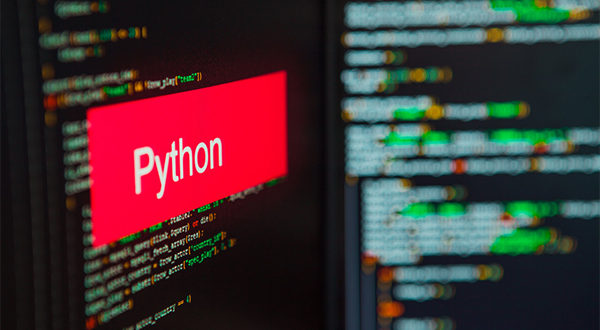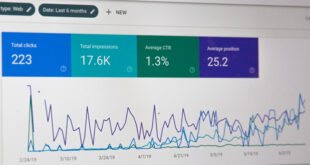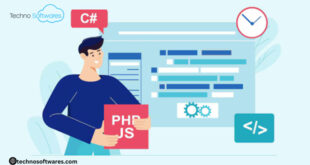Python is one of the most popular programming languages and there are several reasons for that. It has a simple syntax and a plethora of useful development tools. Moreover, Python opens up a window to the world of diverse software development opportunities, from custom web application development services to complex enterprise solutions.
Python frameworks help software developers to accelerate and simplify the development of various software solutions. In this article, we compare the most popular Python frameworks and explain which ones you should use to build custom web applications.
Full-Stack Frameworks vs Microframeworks
Before we dive into the comparison of the Python frameworks, let’s have a look into the difference between full-stack frameworks and microframeworks.
Full-stack Python frameworks are out-of-the-box solutions that offer software developers a set of tools needed to create an application. Usually, they include the MVC (Model-View-Controller) architecture, a template engine, routers, and ORM (Object-Relational Mapping) technique. They work both for the server and client-side development.
Full-stack frameworks work best for the development of large and complex projects, though they can be used for any type of application development.
Python microframeworks provide software developers with only essential tools for application development with minimal coding functionality. For example, microframeworks may lack some features like a database abstraction layer or validation forms. With microframeworks, software developers can build an application using a single Python file.
Some microframeworks can be extended to a full-stack framework by using extra features required for successful application development. Microframeworks are a great choice for small and medium-size projects, prototyping, and learning how frameworks work.
Best Full-Stack Web Frameworks
Here are the top 3 full-stack web frameworks according to JetBrains, the world-leading vendor of professional development tools.
Django
Django is one of the most popular Python frameworks. It’s an open-source solution with a robust set of ready-made packages that eliminate the necessity of coding the basic functionality. All the packages were developed and tested by experts, therefore, software developers save much time as they can use code blocks to build applications.
For building web applications, Django provides software developers with a variety of tools, including:
- template engine with custom HTML rendering;
- object-relational mapping (ORM);
- database version control;
- URL routing system;
- support of WSGI server standard;
- web servers support;
- wide choice of built-in libraries;
- support of extra modules like Django REST Framework, Django Channels, Django CMS;
- support of PostgreSQL, Oracle, SQLite databases, and others;
- strong security with XSS, CSRF, and other attacks prevention that Django applies automatically;
- authentication support;
- internationalization support.
All of these features make Django a flexible, easy to scale, fast, and robust solution for providing various Python development services. As Django is a prime framework for Python development, it has strong community support and thorough documentation with examples.
The Django project examples include Instagram, a social media application, and Spotify, a music streaming platform.
Web2py
Web2py is an open-source framework that has a built-in IDE (Integrated Development Environment). The IDE includes such helping tools as a code editor, one-click code deployment, and a handy debugger. Therefore, software developers can build, debug, and test their web applications in one IDE environment.
Besides that Web2py has a ticketing system and maintenance support. They allow reporting errors immediately and solving error issues in no time.
Main Web2py features include:
- versatile platform support, including Unix, Linux, Windows, macOS, Google App Engine, Amazon EC2, and others;
- synchronous request processing;
- MVC development module;
- role-based access control;
- custom HTML engine;
- custom URL routing;
- built-in REST API services;
- modules for HTTP requests, cookies, reaction, and sessions handling;
- data security against CSS, CSRF, and other attacks;
- internationalization support.
Web2py is a young framework based on the ideas of Ruby on Rails and Django frameworks. It’s easy to scale and it’s quite fast. Besides that, Web2py has great community support that is always ready to help resolve any technical issues.
Web2py project examples are iTel Networks, a cloud service for business and Showcase Workshop, a content-marketing platform.
TurboGears
TurboGears is an open-source data-driven hybrid framework used for web application development. It includes features of both a full-stack framework and a microframework. It works great for developing applications with database connectivity as it supports SQLAlchemy, WebOb, Genshi, and Repoze.
Among other TurboGears features you can find:
- MVC development pattern;
- PasteScript templates;
- support of MochiKit JavaScript library;
- ToscaWidgets;
- FormEncode validation support.
The best TurboGears projects include Apache Allura, a platform with code repositories and Kamisons an eCommerce platform.
Best Microframeworks
Flask, Pyramid, and CherryPy represent the most popular Microframeworks for Python. Let’s have a closer look at them.
Flask
Flask is a popular WSGI (Web Server Gateway Interface) Python microframework. Like any other framework, it provides software developers with the freedom to pick up tools and libraries they need for effective web development. As a result, Flask has a strong community that develops various extensions for this framework.
Flask has a number of great features that make it the second most popular framework after Django, some of them are:
- quick debugger;
- support for unit testing;
- HTTP request handling;
- synchronous request support;
- Jinja2 templating;
- includes plugins that support any ORM like SQLAlchemy and others;
- offers loose coding style without any restrictions.
Flask represents a modular and lightweight framework that can perform various web development tasks. Some Flask project examples include Kickoff Legends, a site with a football game and Lyft, a site of transportation services.
Pyramid
Pyramid is another open-source web building framework that can be extended to a full-fledged solution or be used as a microframework. Therefore, it can be used for building small applications and can be scaled for complex ones.
The framework is extremely flexible and allows using multiple components for application development. For example, software engineers can use two URL mapping methods for one application or connect it to two totally different databases.
The main features of Pyramid are:
- synchronous processing of requests;
- single-file application;
- uses SQLAlchemy instead of any specific ORM;
- testing and file support;
- URL generation;
- API development;
- no certain coding style of project architecture;
- no specific HTML template engine;
- WSGI compatibility.
Some examples of successful Pyramid implementation are Adroll, an eCommerce marketing platform and Easy Blog Networks, a blog building site.
CherryPy
CherryPy is an open-source, web development, and object-oriented minimalistic framework. It’s fast and simple to use. At the same time, it provides software developers with the freedom of choice on how to create their web applications. It has no specific development rules and developers select their approach on how to tackle occurring development issues.
The most distinctive CherryPy features are:
- robust configuration system;
- flexible plugin system;
- supports multiple HTTP servers;
- advanced tools for caching, authentification, encoding, and others;
- support for code testing;
- runs on PyPy, Jython, Python 2.7+, Android, and Python 3.5+.
Some CherryPy project examples are HelloSponsor, a cloud-based event management solution and Juju, a job search engine.
What is the Best Python Framework for Your Needs?
Python is incredibly rich in various frameworks. Therefore, it might be complicated to decide which one to opt for successful custom web development. When considering frameworks for your web application development project, you need to address the following points:
- Does your web applications need solid support on both server and browser sides? If yes, then a full-stack framework will work better for your digital solution.
- Do you have a large or small-scale project? Microframeworks work better for smaller projects as they provide web developers with a high level of flexibility. Whereas full-stack frameworks suit better for large-scale projects as they have enough power to support complex structures.
- Do you consider scaling your projects in the future? If yes, then a hybrid framework might be the right choice for your web application. They allow web developers to start with simple functionality and add more complex features with the development of the project.
- Do you need a set of tested and ready-made solutions in your web application or does your application require more coding flexibility? A stable structure of coding rules and prepared solutions can be found in full-stack frameworks. They speed up web development and minimize the number of coding errors. Whereas flexible development with much coding freedom is included in Microframeworks. They don’t establish any strict coding rules, allowing web developers to design their codes in the most unconventional way.
Summary
Python development includes a wide range of options starting from web development ending to Android and enterprise solutions. Each of these services requires its own specific development tools. Therefore, software developers should carefully pick up development tools into their stacks.
When building web applications with Python, software developers should consider what type of Python frameworks they want to choose for their web applications. If an application is complex and demanding it’s better to opt for full-stack Python frameworks like Django. But when software developers want to create a simple web application then they should consider microframeworks that are easy-to-use and super-fast.
 CoalesceIdeas Web and graphic design ideas for inspiration
CoalesceIdeas Web and graphic design ideas for inspiration




